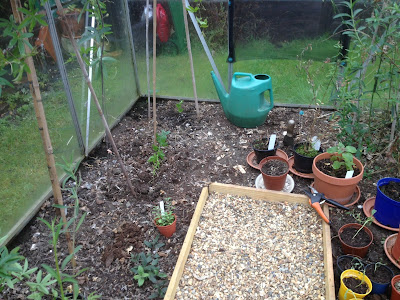Polygonia c-album
The Comma is a widespread butterfly in the UK, and although it has been in decline throughout most of the twentieth century, it is one of the species that is making a comeback, with an estimated increase in numbers of about 37% since the 1970's. It is common in southern England, and its population is slowly expanding northwards. The common name is derived from the white comma-like marking on the underside of the rear hindwings, which is easily seen when the Comma is at rest.
.JPG) |
| The white comma-like marking which gives this butterfly its name is clearly visible when the butterfly is at rest. |
Commas have two broods each year, the first laying eggs towards the end of April and into May, and the second brood usually begins egg laying from mid July. A range of caterpillar foodplants are used, although Nettle (Urtica dioica) is the principle foodplant, but Hops (Humulus lupulus) is also commonly used. Other foodplants include Elms (Ulmus spp.), Currants (Ribes spp.) and Willows (Salix spp.)
The Comma is probably the easiest of our garden favourites to entice to breed in your garden, especially if you live in the south of England. If you ensure that you have a good supply of nectar rich plants in your borders during the appropriate breeding times, and a Hops vine growing up a sunny wall or fence, I can pretty much guarantee you'll have Commas laying eggs. In my own garden, we have had breeding Commas every year since we first planted our Hops vine. They will happily lay their eggs on the normal green strain, or the attractive Golden Hops (H. lupulus) 'Aurea'. I have noticed, however, that we tend to only have second generation butterflies laying on the Hops.
.JPG) |
| The female Comma will lay her eggs on a number of plants, usually Nettles (Urtica dioica) but Hops (Humulus lupulus) is also commonly used. |
Rearing Comma caterpillars is very easy - and even more so when you have a large supply of Hops growing in the garden to feed them on. The eggs are easily found, and are laid singly or in small batches on the upper surface of the leaves, usually close to the edges. Mostly, this is on young, fresh leaves, but some are laid on older leaves. They are easiest to find in sunshine, as they will glisten in the light, and are glassy green in colour. Another way to locate them is to observe the adults as they flutter around the vine - if one is fluttering from leaf to leaf, briefly settling and moving off again, there is a good chance that it is an egg-laying female, and there will most likely be an egg on the leaf she settled on.
The eggs should be kept with as little foliage as possible (cut around the egg if necessary) in a small airtight container and take about a week to hatch, although this may be quicker in warmer temperatures. The container should be checked regularly for hatching larvae. Upon hatching, the larvae should be transferred into a separate container, with a fresh hop leaf. The young caterpillars will quickly retreat to the underside of the leaf and begin feeding, which will become noticeable after several hours, when small holes begin to appear. It is important to make sure that containers are cleaned out every day, and that fresh food is provided. It is usually sufficient to place the caterpillars in with fresh food, whilst still attached to an old bit of leaf. They will soon transfer themselves to the fresh leaves.
.JPG) |
| The caterpillars assume a very distinguished appearance in later stages, being sparsely covered with tan and white spiky hairs. |
.JPG) |
| The caterpillars grow quickly to maturity, before suspending themselves in order to pupate. |



.JPG)

.JPG)



